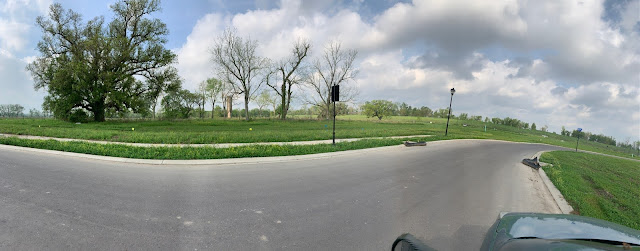That shouldn't be surprising, but it is. It has been two decades. My friend from Baton Rouge is certainly the best known Kestrel falconer, writing the definitive treatise on the subject. That book, American Kestrels in Modern Falconry, happened to be the catalyst to my becoming a licensed falconer sixteen years ago. I doubt seriously that any American Kestrel falconer in the past two decades does not know who he is; I have not encountered one who has not read his treatise on American Kestrels. Additionally, Matt wrote a section on American Kestrels in recent editions of Beebe and Webster's North American Falconry and Hunting Hawks. He also wrote a fine book, In Season, A Louisiana Falconer's Journal, not about American Kestrels.
Since the late 1990's Matt has flown at least three male Harris's Hawks, all Coulson birds. I have been hawking with Matt on a number of occasions since we became friends in 2005. We have hawked together with two of my Harris's Hawks, my Red-tail Cisco, and my Red-shouldered Hawk. Matt has flown Charlie, Smash, and now Ernie. Ernie, like Dart, is a 2007 hatch Coulson male but has different parents. Matt finished this season with Ernie here in Houston on one of my fields. We went out with Dart, Farrah, and Ernie, the fields were not great, but we managed to catch a few.
Back to Kestrels. Matt came in to Houston on Friday 2/7 and started talking about trapping Kestrels. Also we ate some BBQ and drank a little beer. Matt's plan was to meet up Sunday with a buddy in Lafayette on the way home and take his first Kestrel in decades. His late trapped female called CC has been productive in the field, if a bit skittish overall. Kudos, Matt.
For more, watch this clip:
 |
| Manning |
 |
| The last hunt |
 |
| CC with a European Starling |
 |
| Early on |
 |
Matt helping me in 2005 with my little male Kestrel Apollo
|
 |
| Matt with Charlie in 2005 |
KESTREL CODA: I drove past our training field last night and saw no sign of CC. The local kestrel was there, a dark bird that often came in during our training fights to harass us interlopers. I wondered if maybe CC folded under pressure and left the area while I was at work.
I went to sleep with something akin to the feeling you have about a lost hawk, even though the circumstances are obviously different and more favorable after a planned release. It still helps to have proof of a positive outcome.
This morning I was back in the field with binoculars, the lure and half a thawed starling. I saw her immediately when I pulled up, sitting on a lamp post. No question about it: Even after a few hunts, a falconer’s search image is strong for a particular bird; where and how she sits, the color pattern at a distance. A familiar shape, recognized more in the back of the brain than in the eye.
I turned the car around to park it, fumbling with my gear before getting out, and she was gone.
The other kestrel, the dark one, sat fluffed out on a low perch in the middle of a mowed field a hundred yards behind me. She looked to have been sitting there a while. Still, my certainty of CC’s presence diminished slightly. Seeing both birds at once would be better.
I glassed the field, every lamp post, fence post, power line, survey stake, stop sign and tree top. I saw two red tailed hawks, a bald eagle, and then near where CC seemed to disappear, a juvenile Cooper’s hawk, slicked down and in hunting mode, half-hidden in a pecan tree.
The Coop tensed, bobbed his head and leaned forward, then sprang from the tree and straight for something near the road. Whatever it was must have seen the attack in progress and evaded, as the Cooper’s hawk swung back toward its original tree.
And behind it, clear in my binoculars, a pale female kestrel came pumping in, pitched up and stooped once at the larger hawk before circling back to her own tree top perch.
It was CC - again without a doubt in the brain’s basement - and she seemed very much at home in her little corner of the farm adjacent to our training field. She bobbed once at the lure when I swung it and bolted toward me, I felt, in response; but she turned in a tight circle and lit again in her tree.
This kestrel who wouldn’t land on the lure when 2 grams over hunting weight certainly won’t when 20 grams over and beneath three hawks and an eagle. I was satisfied with her answer. I watched her for about an hour from my car and drank my coffee and took a few pictures for this post.
I checked for the other bird and she was there too, unperturbed by CC’s occupation of the field’s far corner.
I’ll probably drive out again tomorrow morning, but I’ll leave the lure at home.



Nice Chuck!
ReplyDelete